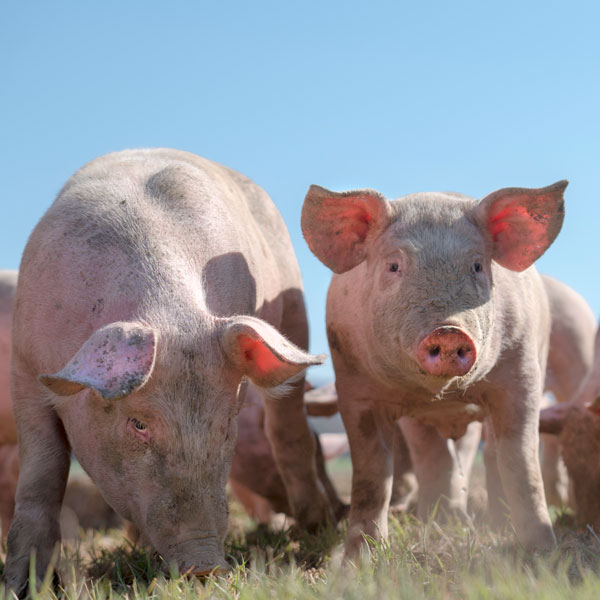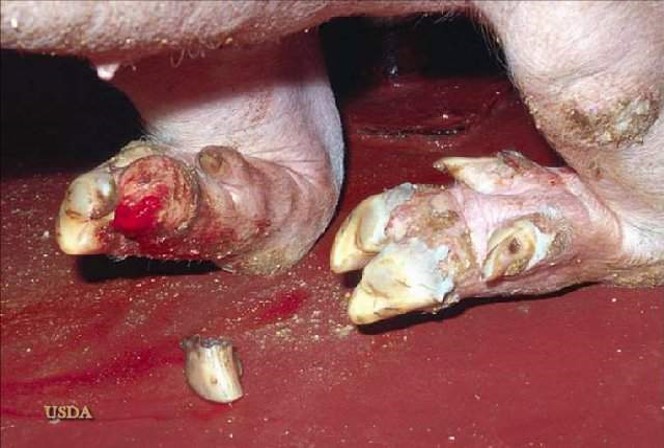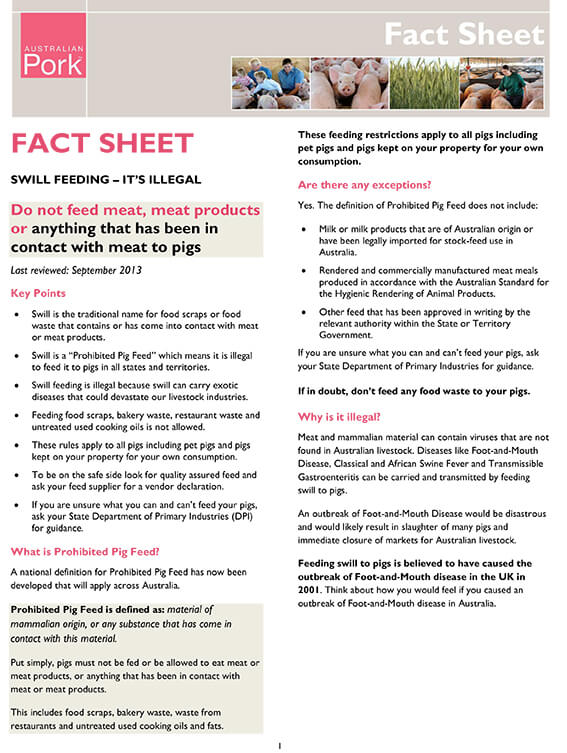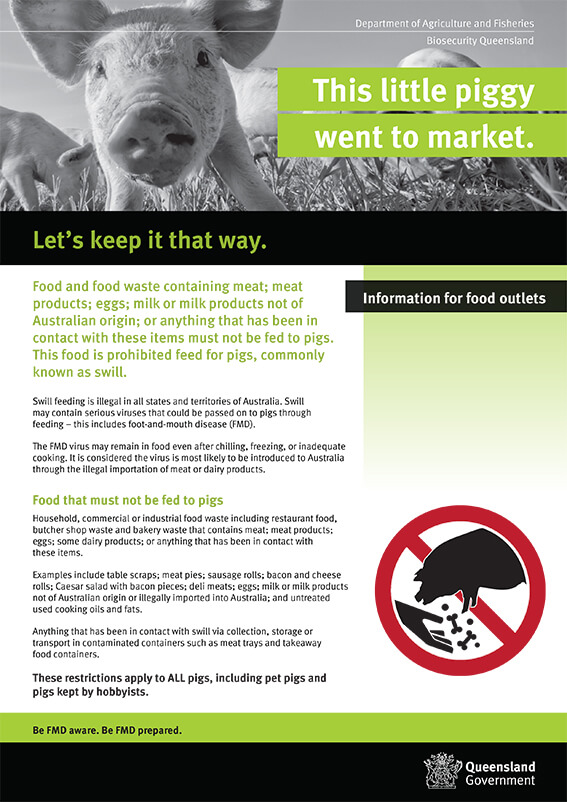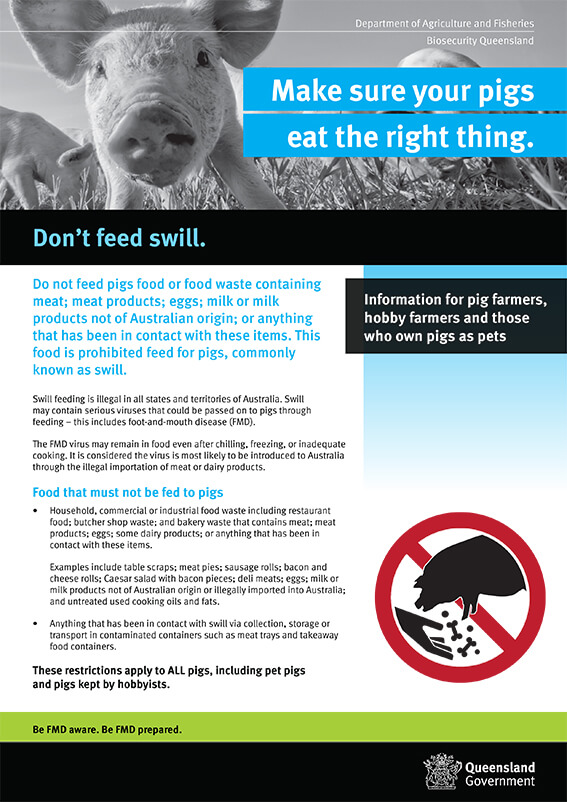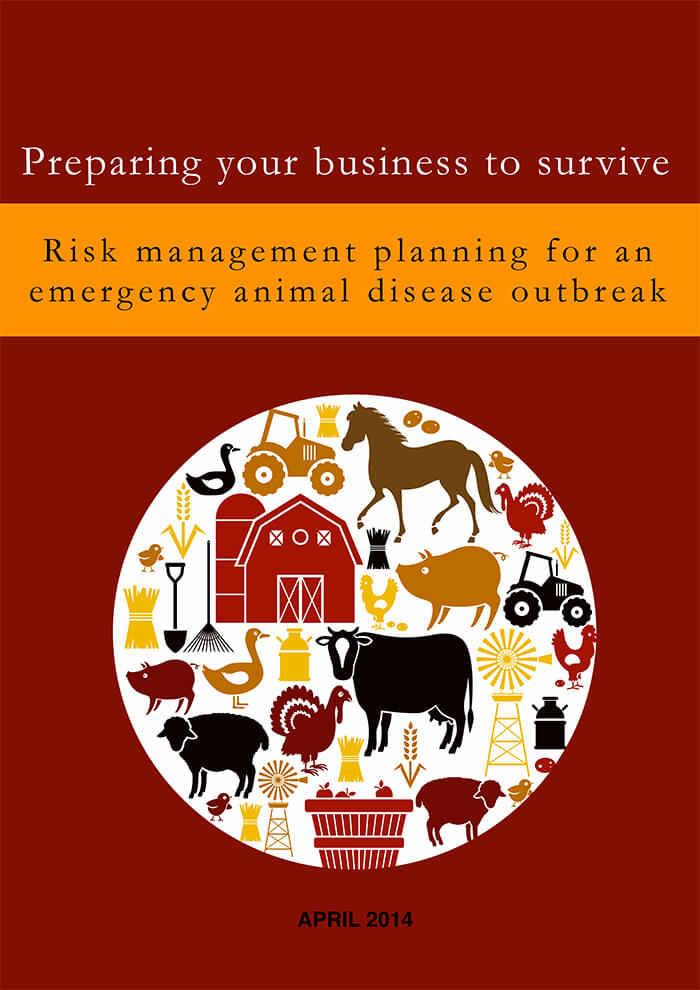Foot-and-Mouth Disease in pigs
Foot-and-Mouth Disease (FMD) is one of the most contagious animal diseases and is caused by FMD virus. This is not the same Hand-foot-and-mouth disease (HFMD) in humans. Although FMD occurs in many parts of the world, Australia is recognised as free from FMD without vaccination.
Signs of FMD
In pigs, the clinical signs of FMD are variable and may include:
- Severe blisters and erosions on the feet resulting in lameness
- Detachment of the claw horn revealing painful exposed tissues
- Blisters and erosions on joints of limbs, resulting in knuckling
- Blisters on the snout, lips, tongue, inside the mouth and teats
- Abortion and death in young piglets
- +/- Fever (to 40.5°C)
* Early stage of disease
Photo credit: USDA
How is FMD transmitted?
The incubation period is 14 days and infected animals can spread the virus before showing any clinical signs of disease. In contrast to ruminants, the primary mode of transmission in pigs is through infected feedstuffs, although direct contact and inhalation of contaminated aerosols also occurs. Illegal swill feeding of pigs is a significant risk factor. Movement of infected animals is one of the most important routes by which FMD spreads between herds and farms.
Transmission easily occurs when animals are in close proximity. Contaminated clothing, equipment and vehicles can also spread the disease. The FMD virus can remain infective in the environment for several weeks to months in soil, manure, dried animal secretions, straw, hair and leather.
Reference: https://www.business.qld.gov.au/industries/service-industries-professionals/service-industries/veterinary-surgeons/foot-mouth-info/clinical-signs-pigs
Pig Biosecurity Resources
Download the Pig Biosecurity Resources below
Anti-Swill Feeding for food outlets
If your livestock are showing signs of Foot-and-Mouth Disease, immediately call the Emergency Animal Disease Watch Hotline on 1800 675 888 (free call within Australia).
On-farm Delivery Biosecurity
Off-farm biosecurity for service providers
VFF Foot-and-Mouth Disease webinar

